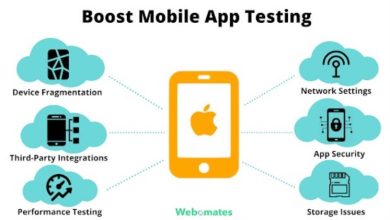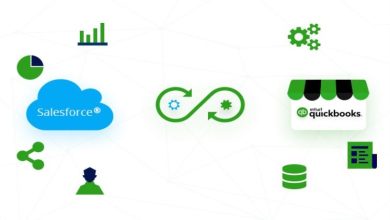Launching a ChatGPT App: A Timeline Analysis of Time-to-Market Factors

We, as of late, set out on a small experiment—a side venture that turned into a case study in advancement. You see, I’ve continuously lectured a basic mantra inside my group:
Completely falling in love with the problem, not the solution, is a philosophy many overlook. Embracing my own advice, I identified a gap in the mobile app ecosystem—leadership devices.
Recognizing the subpar offerings available, I decided to roll up my sleeves and develop a groundbreaking solution through innovative ChatGPT development services.
The thing is, I’ve been a backend developer, an item chief, and a CEO, but I never truly made versatile apps myself.
What if I told you that, indeed, without earlier involvement in portable advancement, I oversaw bringing an app from conception to model in under two months?
All much obliged to a combination of AI and cutting-edge advancement tools—with a bit of elbow oil, of course.
The method was interesting. Let me walk you through this step-by-step enterprise.
Step 1: Ideation
Sometime recently, I discovered a problem worth tackling. It was the need for quality authority counsel and instruments in the shape of portable apps, which assist you on a day-by-day basis.
There were numerous, but none hit the check. Once you’ve fallen in love with an issue, you’re prepared to make an arrangement. It’s a very interesting theme, and I will investigate the “how”s and “why”s within the following article.
Step 2: Select the correct devices
With the objective clear, the next step is gathering your toolkit. Here’s what I utilized:
ChatGPT (acclaim to OpenAI):
particularly the paid GPT-4 form ($20/mo), as it creates superior code. I’ve made a few GPT-3 prompts that, by and large, worked, but the paid adaptation is so much superior.
It’s a fantastic choice on the off chance that you’re uncertain where to begin, have to be investigated, or have common headings for your target.
Cross-platform system:
Ionic for JavaScript improvement over iOS, Android, and Web. Angular came to be my choice, but Respond and others are great contenders.
Local API access:
Capacitor.js (from Ionic) to connect with local gadget highlights.
Xcode:
To construct iOS applications. You’ll be able to download the most recent adaptation from the Mac App Store.
IDE:
Visual Studio Code with expansions like Ionic (for tests and builds).
Do note:
ChatGPT comes with a bunch of confinements (which keep changing as the stage advances), to be specific:
The current information cutoff date is April 2022, which suggests ChatGPT has a small idea of the most recent changes in iOS, Ionic, and Angular APIs.
The number of messages you can get in one session also changes all the time. You’ll likely be able to chat for a few hours until ChatGPT strengthens you enough to require a 30-minute break.
It’s terrible when you’re “coding” at midnight and holding up for another provoke and reply.
ChatGPT is quite slow during the code era, and getting the proper reply might take a while. It is worth the wait, normally, and quite soon GPT-4 Turbo will fathom this.
You get to see code scraps, not the complete code of the app.
That’s due to context size and the common token calculation behind ChatGPT. The paid adaptation, GPT-4, right now has 8k tokens accessible in a single discussion.
As before, as long as the token limit is reached (i.e., sufficient data was given by the client and prepared by the framework), ChatGPT will begin to disregard stuff. No doubt.
ChatGPT can be to some degree uncertain with code, particularly if it’s complex. Be that as it may, it’s still much better than coding totally on your own—the chatbot does help you learn very quickly.
Step 3: Develop that app!
Presently, onto the creation stage. Try something like this, on the off chance that you need to take after my example:
Familiarize yourself with the system by understanding it. In case you’re new, don’t fuss. There’s a bounty of documentation and community support to direct you. There’s a learning curve to everything, actually, but it’s worth it.
Construct a model utilizing ChatGPT code. Inquire for bits of code or arrangements for specific problems you experience. This AI isn’t a coder; it’s a mentor. Keep that in mind at all times.
The magnificence of ionic and comparative frameworks is their capacity to test your changes on the fly, right inside your browser. Attempt modern changes as you get a new code bit, and see where it brings you and how it works.
Capacitor.js comes in handy after you ought to incorporate local gadget highlights like thrust notifications or getting to the camera. You’ll likely require all these as well.
Xcode will be your go-to for compiling iOS apps. VS Code and its expansions offer an important space for composing, testing, and investigating code. You’ll likely bargain with a part of these as well.
Here’s a custom chat I’ve made to help you get started, with all the right prompts in there as of now.
Step 4: Test and repeat
What’s mind-blowing is the immediacy of testing changes.
You’ll be able to see the advancement of your app in real-time, right in the browser—until, of course, you get into the local APIs of iOS or Android.
When the time comes to compile an iOS construct, you’ll require an Apple engineer account, which comes with a fee and a holding-up period.
But here’s where it gets indeed more exciting—the app was not as it materialized but started to embody the exceptional standards I needed to advance.
It offers day-by-day administration affirmations and quotes right on your lock screen, with my spouse curating the content—a family endeavor that included an individual touch to the app’s purpose.
Users can stamp the bits of knowledge as relevant and personalize their involvement.
To test your app on a genuine gadget without an Apple Designer account, utilize Ionic’s Browser Nexus for recreation and press out any bugs.
Testflight will assist you in sharing beta forms with analyzers sometime after the release—you can discover it in your Apple Dev Account in App Store Connect.
That way, you’ll effortlessly test native iOS APIs such as vibration, haptic criticism, notices, and other stuff.
Step 5: Prepare to dispatch
You’re almost there.
Apple Developer Account:
On the off chance that you’re pointing to the App Store, sign up for an Apple Engineer account. It’s a speculation that clears the way for your app’s future, at a mere fetched $99. You’ll require it for all the iOS APIs, like widgets, symbols, app activities, and numerous others.
Substance curation:
populate your app with quality substances. In my case, leadership citations and assertions curated by my accomplice, Svetlana Sharifulina, gave the app its soul. ChatGPT can also assist you here with content.
Here’s our favorite inspiration:
“Please rephrase this content and show five choices; the objective is to propel clients to take action.”
Of course, investigating is just as simple to do. Say you get this:
Mistake:
src/app/pages/affirmations/affirmations.page.ts:
15:
5: Mistake TS2322
Step 6: Launch and scale
Dispatch your app and screen its execution closely. Utilize information and client criticism to grow and adapt your item to serve your gathering of people way better. You know, audit administration is something that never gets old.
So, amid this three-month travel, I planned an instrument that encapsulates the essence of effective leadership—the Leadership App. With over 3,000 certifications and 300 quotes, it’s time for pioneers to refine their skills.
This app conveys everyday certifications from striking CEOs across 30+ authority categories.
Clients can personalize their encounters, selecting categories that resonate with their travel and sharing their disclosures with peers to cultivate a collective development mentality.
As for myself, I’ve learned:
- Precise and Typescript skills
- Great understanding of Hybrid app advancement
- Quick gadget systems
- Plugin debugging (sounds like a decent title for an alt-rock band)
- App builds
- App beta testing



